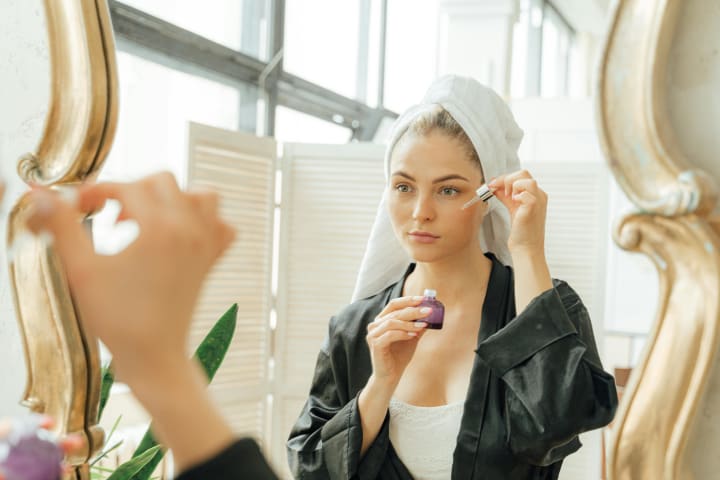
The pursuit of flawless, radiant skin often feels like navigating through a maze of buzzwords and trends. In recent weeks, snail mucin has become a hot topic in the skincare community, praised for its ability to moisturize and rejuvenate the skin.
While raving reviews of slime-infused products keep making the rounds on TikTok promising transformative results, the fair question arises — what snail mucin is, and does it truly live up to the hype? Let’s delve into the science-backed insights on this viral ingredient with Valerie Aparovich, biochemist, certified cosmetologist-aesthetician, and science team lead at OnSkin, the app that checks cosmetic products for safety and skin match.
What is snail mucin composed of?
Snail mucin is mucus naturally secreted by snails for lubrication and antimicrobial protection. This slimy secretion isn’t new to the market as a cosmetic ingredient, highlighted by the Korean skincare industry back in the 2000s. In cosmetic formulations, it’s usually named Snail Secretion Filtrate.
While there is still not a large body of research backing up the full skincare potential of snail mucin, several benefits have scientific evidence behind them – due to the skin-healthful substances it’s made of. “On a chemical level, snail mucin is primarily composed of three skin-beneficial compounds associated with the marketed effects: hyaluronic acid, allantoin, and glycolic acid,” notes Aparovich.
Hyaluronic acid is a humectant that moisturizes the skin from the inside out and vice versa. “It can attract water molecules from deeper layers of the skin and air humidity, encouraging water retention on the surface and preventing transepidermal water loss,” Aparovich explains. As a result, the skin appears plumper, more elastic, and radiant.
Allantoin is a natural chemical compound with a potent moisturizing effect. Besides, according to Aparovich, “it possesses soothing and anti-inflammatory properties, helping to prevent infection and boost cell turnover, therefore supporting sooner skin recovery and injury healing and reducing the risk of acne-induced scarring.” As a result, the skin’s texture and complexion improve, looking smoother and evener.
Glycolic acid is an exfoliant belonging to the group of alpha hydroxy acids (AHAs). “It deeply penetrates and speeds up cell turnover, stimulating renewal processes within the skin, promoting collagen production, and helping to fade hyperpigmentation,” says Aparovich. As a result, the skin appears refreshed and rejuvenated.

What skincare benefits can snail mucin offer?
It promotes moisturizing and strengthens the skin’s barrier.
Snail mucin is an efficient moisturizer containing decent amounts of hyaluronic acid and allantoin. “Not only does it help reduce dryness, itchiness, and tightness, but it also strengthens the skin’s barrier, shielding it from losing moisture and decreasing its susceptibility to external pollutants and stressors,” explains Valerie Aparovich, biochemist and certified cosmetologist-aesthetician at OnSkin.
It eases inflammation and supports skin regeneration.
Studies confirm the antimicrobial activity of snail mucin and its antibacterial capacity against staphylococci and streptococci bacteria isolated from wounds. Therefore, according to Aparovich, “it's a wound-healing agent that speeds skin regeneration after injury and is an excellent additional ingredient for anti-inflammatory cosmetic formulations.” Studies also show snail mucin’s good antioxidant capacity and ability to neutralize free radicals, easing the inflammatory response and reducing cellular damage induced by reactive oxygen species.
It encourages skin renewal and brightens the complexion.
Snail mucin promotes skin renewal and can help combat the first signs of aging, like small fine lines and periocular wrinkles, and lighten post-inflammatory dark spots. “It mainly happens thanks to the presence of glycolic acid in its chemical formula, which supports collagen synthesis, boosts cell turnover and the production of new skin cells, and brightens and evens out the complexion,” explains Aparovich.

Who is most suitable for using snail mucin?
According to Aparovich, this hydrating ingredient is universal and suitable for all skin types. As the most significant benefit of snail mucin is moisturizing, it’s a perfect pick for people with dry and dehydrated skin. It’s not shown to be comedogenic and won’t clog pores, so it’s also a good fit for oily and combination skin types. In creams and serums, snail mucin is often combined with other hydrating ingredients to strengthen the moisture-boosting effect, working especially well with peptides, hyaluronic acid, or plant-derived extracts such as aloe vera, Aparovich adds.
Does snail mucin have any side effects?
Snail mucin is generally considered safe to use, and allergy reactions to this ingredient are rare. Nevertheless, they may occur in some individual cases, or when the person is reactive to other compounds in the formula. So, a local patch test on a small area of the skin is necessary before fully introducing any new cosmetic product to your skincare routine.
Besides, Aparovich always recommends checking the entire ingredient list to ensure that each particular product formulation is safe to apply on your skin and contains no toxic preservatives, allergic fragrances, or irritating alcohols.
About the Creator
Ana Chur
Holistic health enthusiast and wellness writer






Comments
There are no comments for this story
Be the first to respond and start the conversation.